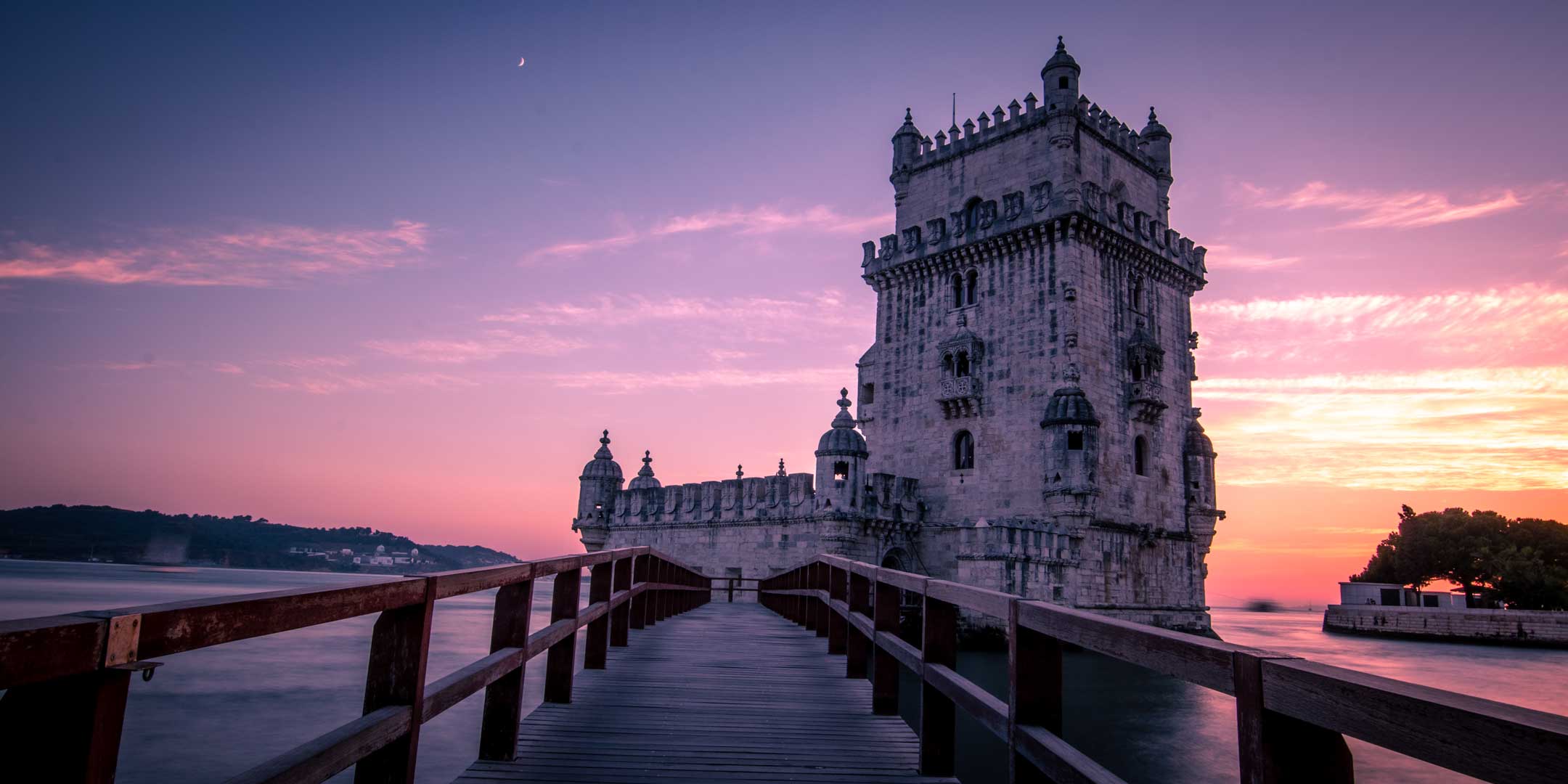The top Portugal landmarks may not be the most famous ones in Europe, but they are definitely as exciting as them. A gothic monastery, a yellow castle, a fort at the end of the world, a medieval university, the most picturesque train station in the world, or a boulder village. How many countries, even in Europe, can claim to have such diverse and peculiar attractions?
Get a glass of Port wine and make yourself comfortable because it’s time to embark on a virtual journey around the most significant landmarks in Portugal.
Jeronimos Monastery, Lisbon

Built in 1502, Jeronimos Monastery is the most visited landmark in the country and a prominent symbol of Portugal’s power during the Age of Discovery.
The monastery used to be home of the monks of the Order of Saint Jerome, whose duty was to give guidance to sailors and pray for the king’s soul. That’s the reason behind the stunning maritime motifs that characterize the elaborate Manueline design.
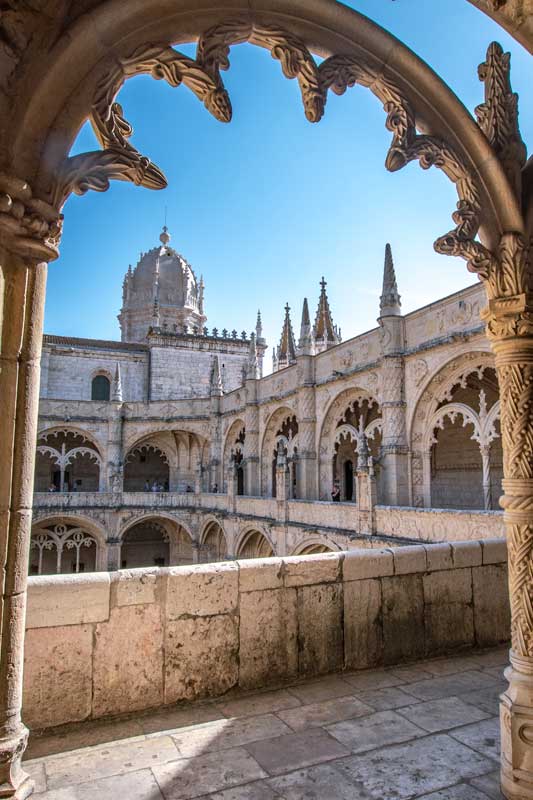
Besides the magnificent cloisters, Jeroniomos’ biggest highlight is the tomb of Vasco da Gama. In fact, the whole monastery was built to commemorate the great sailor. It’s ever erected on a site of a hermitage where Vasco da Gama and his crew spent their last night in the country before they embark on the journey to India.
In 1983, the Jeronimos Monastery alongside the nearby Tower of Belem were listed as a UNESCO World Heritage Site.
Belem Tower, Lisbon
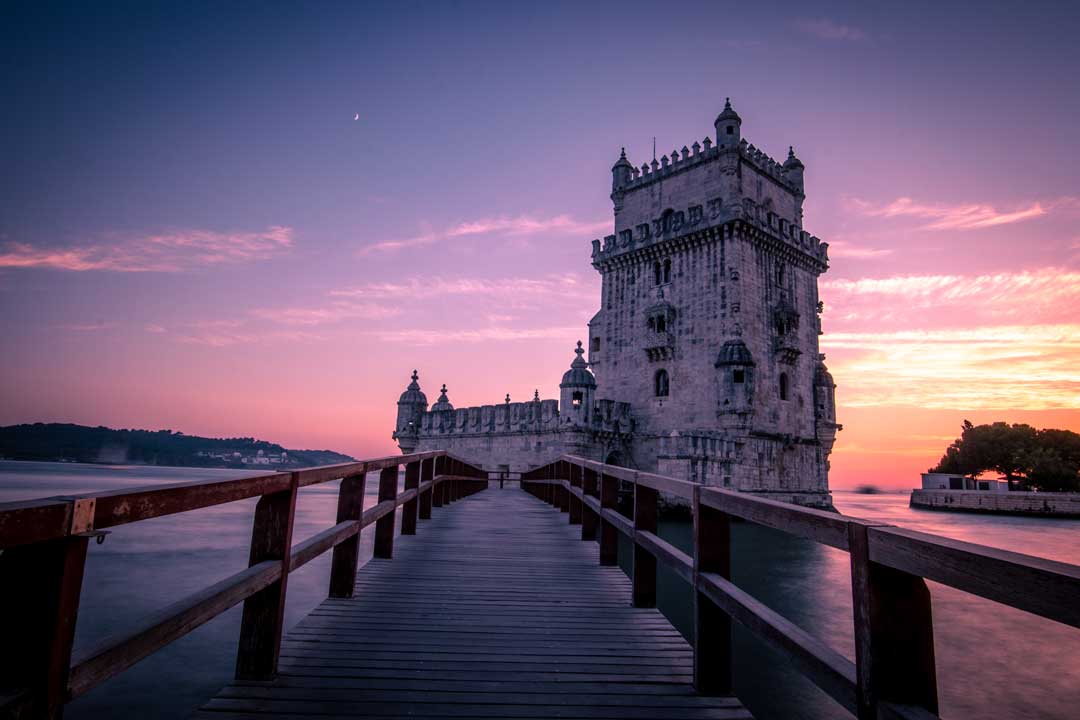
Just 10 minutes away from the Monastery, we find Jeronimos’ little sister – the Tower of Belem. Designed in the same magnificent Manueline style, the tower was built between 1514 and 1519 and used to be part of the defense system of Lisbon.
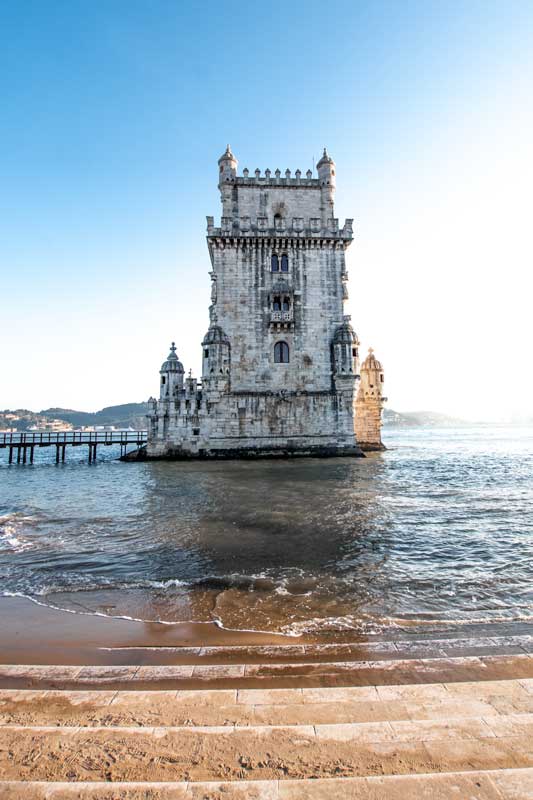
During Portugal’s Age of Discovery, most of the voyages started in Lisbon, so the tower was the last thing sailers saw from the country. Since it was also the first thing they were going to see on their way back, the Tower of Belem became a symbol of homeland, an icon that embodies their craving to return safely to their friends and families. Today the tower reminds the Portuguese about their Golden Age, and it’s among the most prominent attractions in Portugal.
See Also: What NOT to do in Lisbon
Pena Palace, Sintra
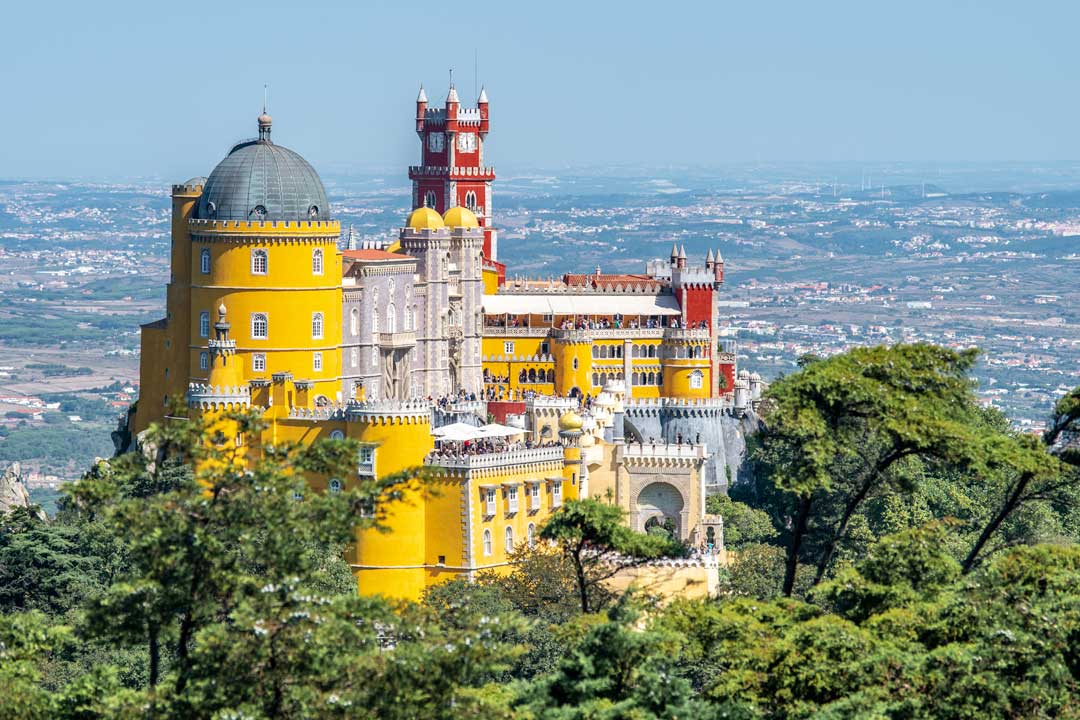
The symbol of Sintra is a prime example of 19th century Romanticism, and one of the top things Portugal is famous for around the world. Rocking the look of a life-size Mcdonalds bouncy castle, Pena was built between 1842 and 1854 to serve as a summer residence for King Ferdinand.

The reason behind its extravagant colors is that the King and Queen, who were famous for their opulent tastes, wanted to be closely involved in the process and kept on making adjustments on the design. While interfering with your designer is usually not something that ends well, in this case, the quirky King and Queen managed to build a castle so peculiar that to this day is one of the most interesting Portugal landmarks.
Quinta da Regaleira, Sintra

This impressive mansion may not be as old as the other Portugal landmarks, but it’s definitely not less exciting.
Built in the early 20th century, Quinta de Regaleira features a spooky Gothic grand house and four hectares wide gardens inspired by the owner’s mystic ideologies. References to the Knights Templar, the Masons, and dark alchemy are hidden all over the grounds, most famous of which are the two Templar initiation wells.
In 1997 the Quinta was reclaimed by the local government, and in 1998 it was open to the public.
Dom Luis Bridge, Porto
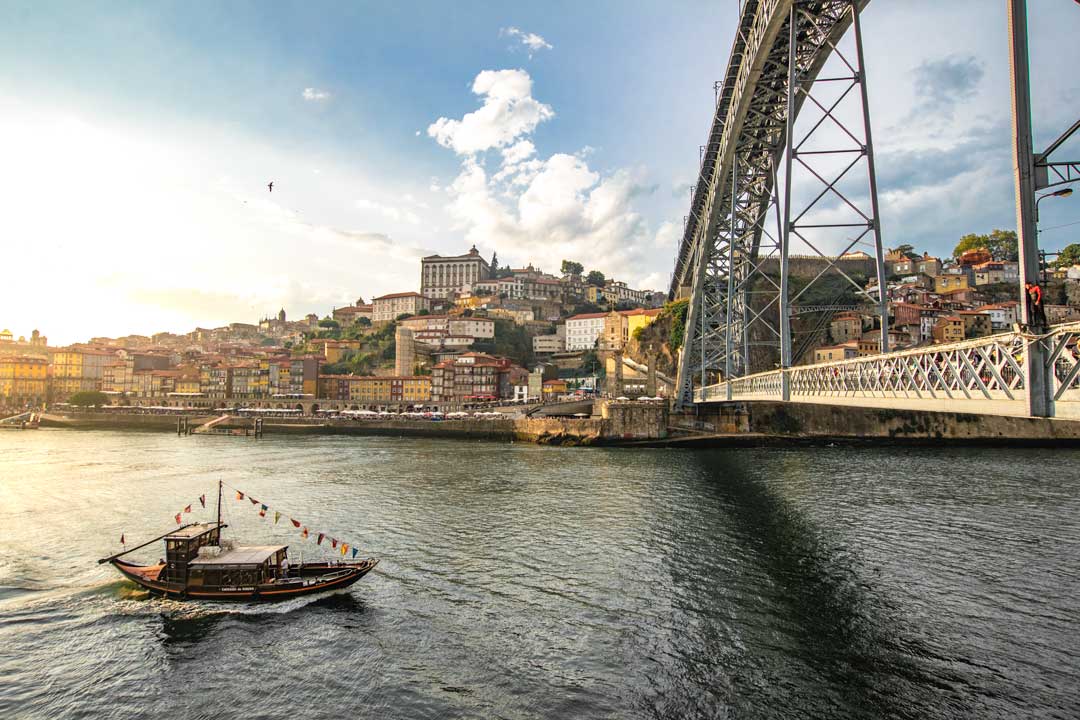
There are many famous bridges in Portugal, but there is none as notable as Porto’s symbol – the Dom Luis Bridge. The double-decker engineerial masterpiece links the Port wine cellars of Vila Nova de Gaia with the bustling downtown Ribeira district.
While both levels of the bridge were designed to carry traffic, today, the top deck is reserved only for pedestrians (and the metro train). If you ever find yourself in Porto, make sure to cross Dom Luis. Walking 60 meters above the Douro River, and enjoying the stunning views of the colorful town underneath, is an absolute bucket-list activity.
Castaway Fact
If the Dom Luis Bridge’s construction reminds you of the Eiffel Tower, you have a good eye. The bridge’s main architect was a student of Gustave Eiffel himself.
Sao Bento Train Station, Porto
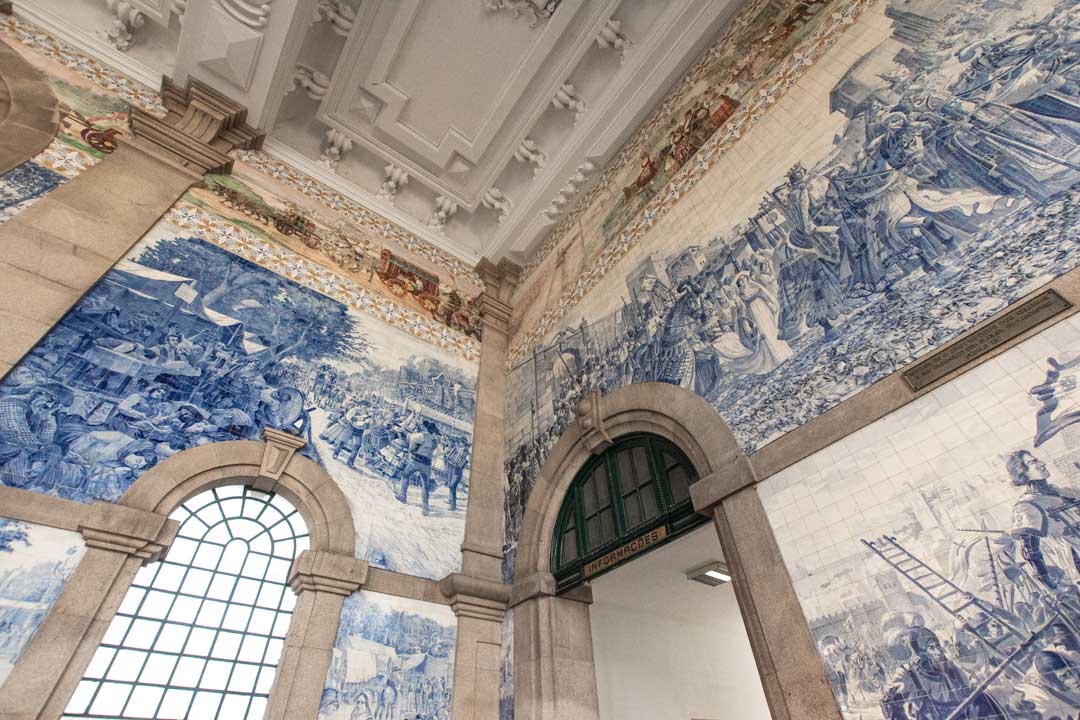
Now you may wonder, is a train station really one of the most prominent landmarks in Portugal? Well, yes, it is, and let me tell you why.
Inaugurated in 1916, Sao Bento is the most beautiful train station in the world. It’s embellished by 20,000 traditional azulejo tiles that depict Portugal’s lifestyle, battles, Kings, and transportation history.
Named after a Benedictine monastery that once occupied its space, Sao Bento is an awe-inspiring piece of architecture and history.
See Also: The Ultimate Portugal Travel Itinerary
Clerigos Church and Tower, Porto

Another symbol of Porto, this 18th-century baroque masterpiece was designed by the famous architect Nicolau Nasoni. While the granite-marble interior of the church is worth a visit, the main highlight of this landmark is the church tower. Standing 75 meters tall, the Clerigos Tower awards breathtaking views over the old town and the Douro River to all who dare to climb its 200 steps.
Benagil Sea Cave, Algarve
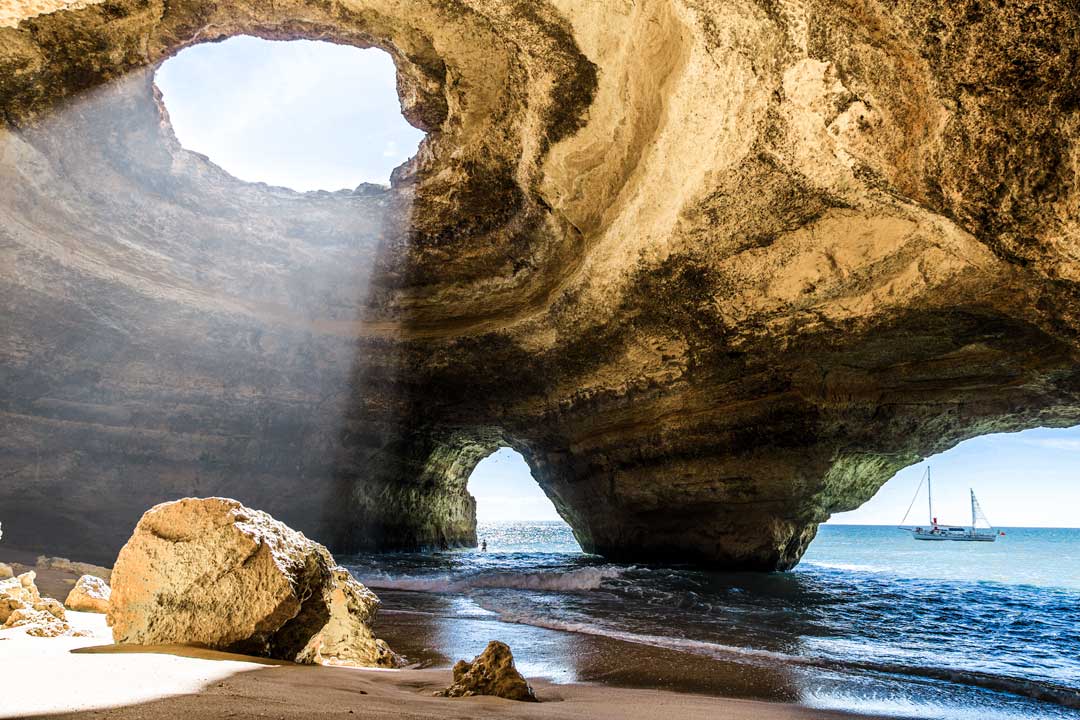
No, not all Portugal landmarks are man-made. Located near the small town of Algarve, Bengali is one of the most famous and beautiful sea caves in the world. While you can reach the top of the cave by foot, the real magic is inside, and that’s reachable only by small boat or kayak.
The fascinating rock formation features a “big eye” on the ceiling that allows the sun to shine over the little beach inside, creating not only a magical atmosphere but also a perfect photo composition.
The best Portugal landmark for your new IG profile pic – the Benagil Cave.
Castaway Tip
Don’t try to reach the cave by swimming – the tides and currents in the area strong and known to change quickly.
Fort of Sao Joao Baptista, Belerengas Islands
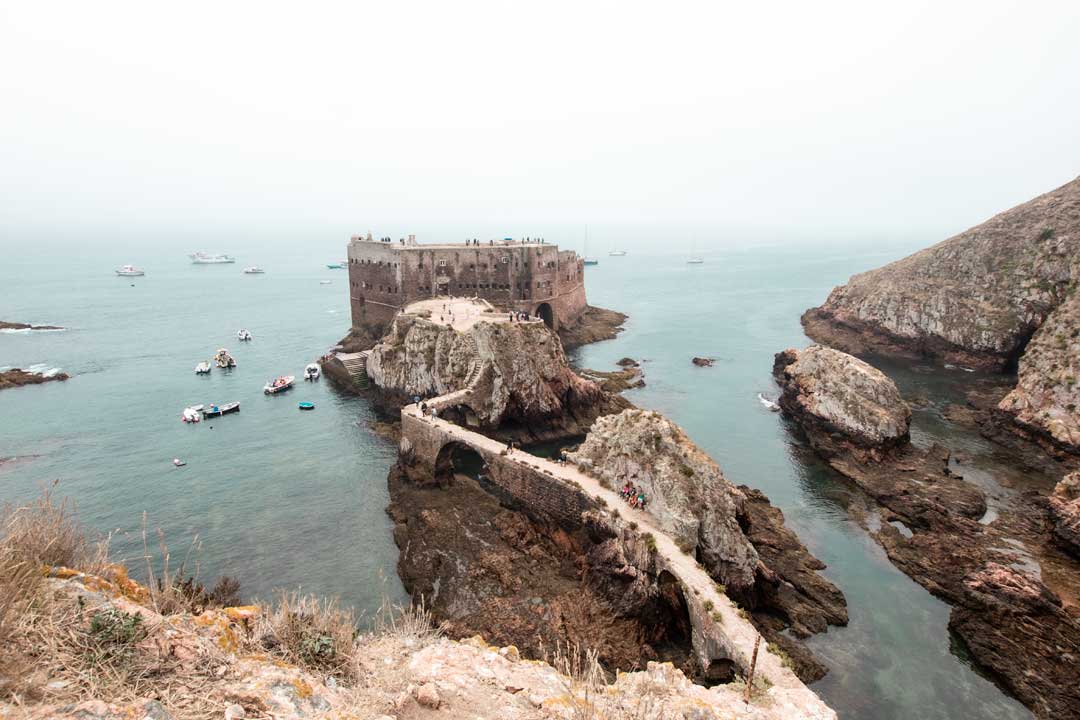
One of the most underrated landmarks in Portugal, The Joao Baptista fort, is a mesmerizing construction surround by a stunning landscape. Dating back to 1502, the fort is located off the western coast of Portugal, on the largest island of the archipelago of the Berlengas.
Sitting on a rock in the middle of nowhere, the Sao Joao Baptista fort is one of those sites that will make your jaw drop to the floor.
I named it the Fort at The End of The World, and I strongly suggest that if you ever find yourself in Portugal, you go check it out.
See Also: The Most Incredible Landmarks in Italy
The Douro Valley

Located just 100km (62mi) west of the city of Porto, the Douro Valley is one of the oldest demarcated wine regions in the world. A Unesco World Heritage site since 2001, these beautiful terraced vineyards are gaining more and more popularity in recent years.
And there’s a good reason for that. A stunning scenery, relaxing atmosphere, and the opportunity to taste genuine Port wine straight from the producer is a perfect combination for a memorable experience.
Check out few other fun facts about Portugal.
Bom Jesus du Monte, Braga
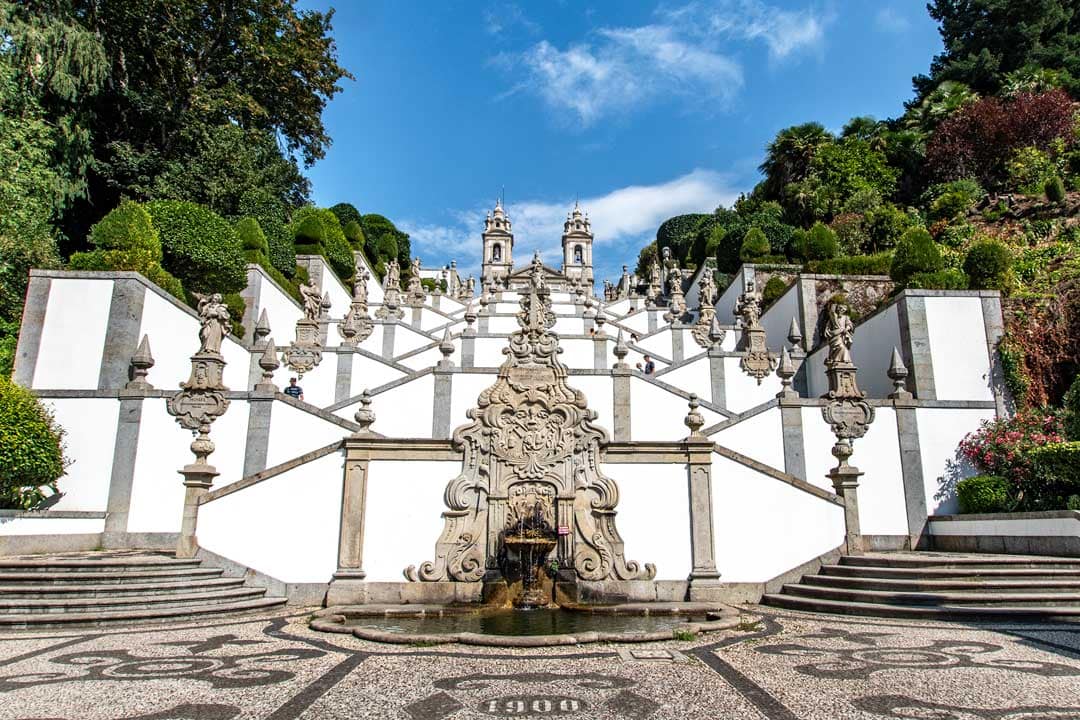
Bom Jesus Do Monte is the biggest landmark in Braga and the prime reason for tourists to explore the picturesque Portuguese town.
Dating back to the 14th century, the sanctuary used to be a major pilgrimage site. Every year, thousands of pilgrims climbed the 577 step stairway on their knees, showing their devotion to the true faith. As a matter of fact, plenty of traditionalists are still doing it.
Speaking of the stairway, the zig-zag-shaped architectural masterpiece is the biggest highlight of Bom Jesus du Monte. It contains 17 landings adorned with symbolic fountains, allegoric statues, and other Baroque-style decorations themed around various bible stories.
See Also: Top 20 Landmarks in Greece
Historic Village of Monsanto
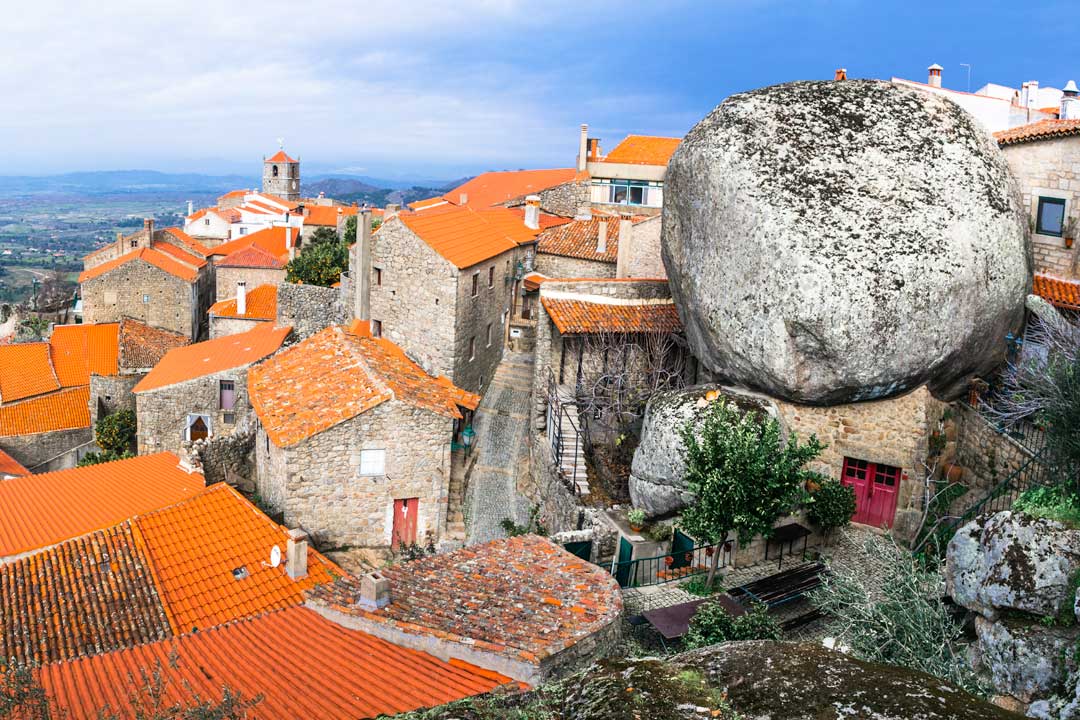
Next on our list, we got a whole town. The historic village of Monsanto may not be as famous as the other Portugal landmarks, but it’s as unique as it gets. Known as “the most Portuguese village of Portugal,” the roots of the settlement dates all the way back to the 12th century.
Ok, but what’s really making it a landmark?
The unique part of Monsanto is that the village is created on a granite mountain slope. Not only all the houses are made out of granite, but they are also incorporated with the natural boulders.
Imagine having a natural granite boulder as one of the walls of your bathroom. How cool is that?
Convento do Cristo, Tomar
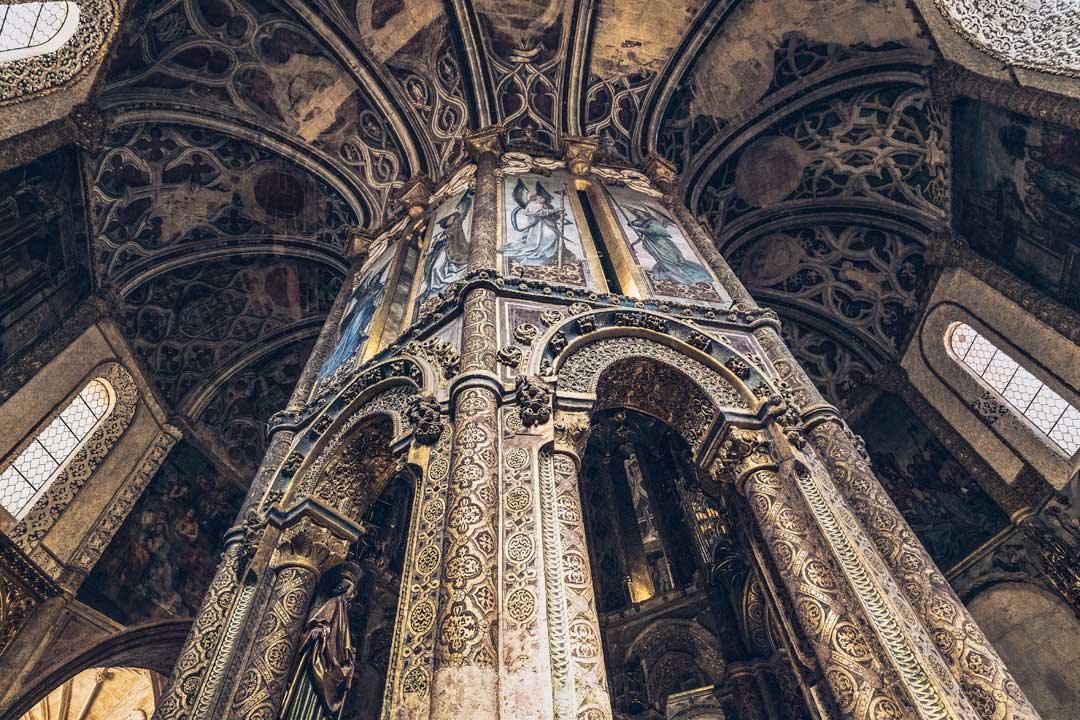
The medieval headquarters of the Knights Templar were built in 1160, and even today, remain one of the most significant landmarks in Portugal.
The 12th century was hard for the mythical knights. The sovereigns began to fear the Pope is getting to much power, so they started to persecute and burn alive its army – the Templar Knights. The King of Portugal, however, felt pity for them and renamed them to the Order of Christ, thus saving the Templars from certain death.
The Convento do Cristo features blend of multiple architecture styles and glorious collection of ironworks, paintings, and tapestries from various ages. The most renowned draw is considered to be the Manueline-styled chapel.
Capela de Ossos, Evora
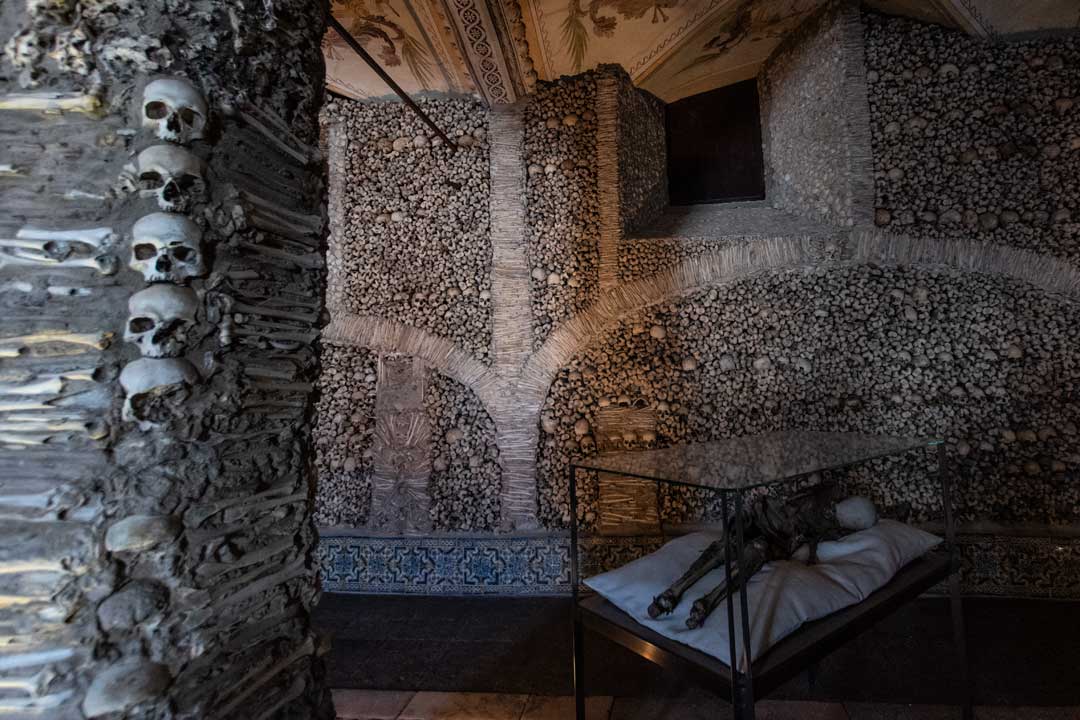
This Portugal landmark is the most creepy one by far. The Capela de Ossos is a small chapel built out of human bones. No, not just decorated with bones, it’s made out of bones! The walls are constructed from femurs with mortar while skulls and other bones are placed around the interior. There are two legends about the origin of the bones. The first one says they are soldiers fall in battle, while the second one claims they are plague victims. In reality, during the 16th century, Evora’s graveyards became overcrowded, so bones had to be exhumed to make way for new bodies. According to the prevalent Counter-Reformation ideology of the time, the dead would be closer to god if they are close to a place of worship, so the chapel was created.
Creepy Castaway Fact
The entrance of the chapel greets visitors with a foretelling Portuguese inscription: “We, the bones that are here await yours.
Coimbra University
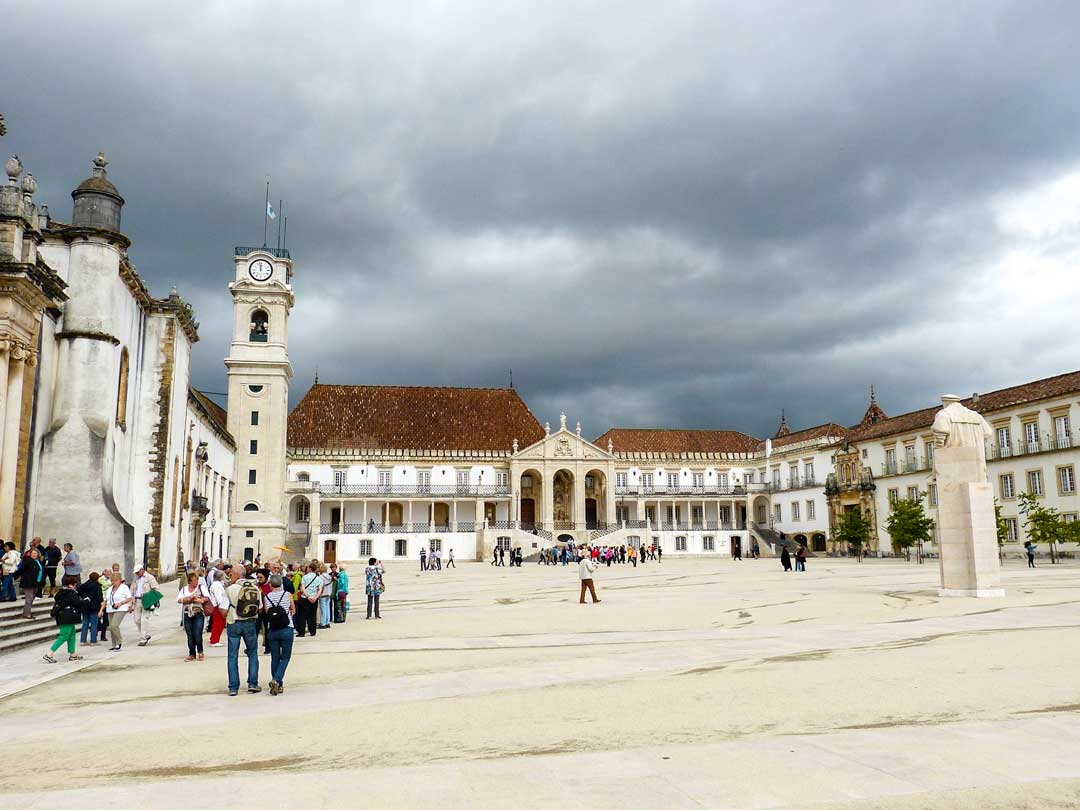
The last Portugal attraction on my list is a university established all the way back in 1290. It’s the oldest one in the country and also one of the oldest universities in continuous operation in the whole world. Until the 18th century, the only subjects taught at Coimbra University were theology, medicine, and law.
Castaway Fun Fact
Even though it’s is not a castle by the lake, Coimbra University bears some resemblance to Harry Potter’s Hogwarts. All faculties have their official colors, and students wear traditional attires that look just like Hogwart’s students’ mantles.”
That’s all from me, I hope you enjoyed these incredible Portugal Landmarks.
————————————
If you haven’t planned your trip there yet, find out how I plan my trips!
————————————
I have 17 bucket list ideas for Portugal. See my impossible bucket list of 1700+ adventures!
Which one is your favorite?
Some of the above are affiliate links and I will earn a percentage of the sale if you purchase through them at no extra cost to you. This helps keep my site running – so thanks in advance for your support!




